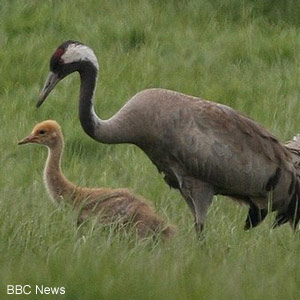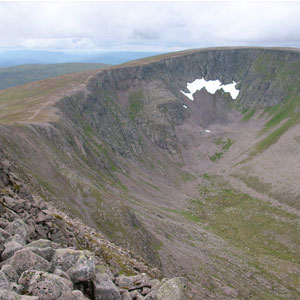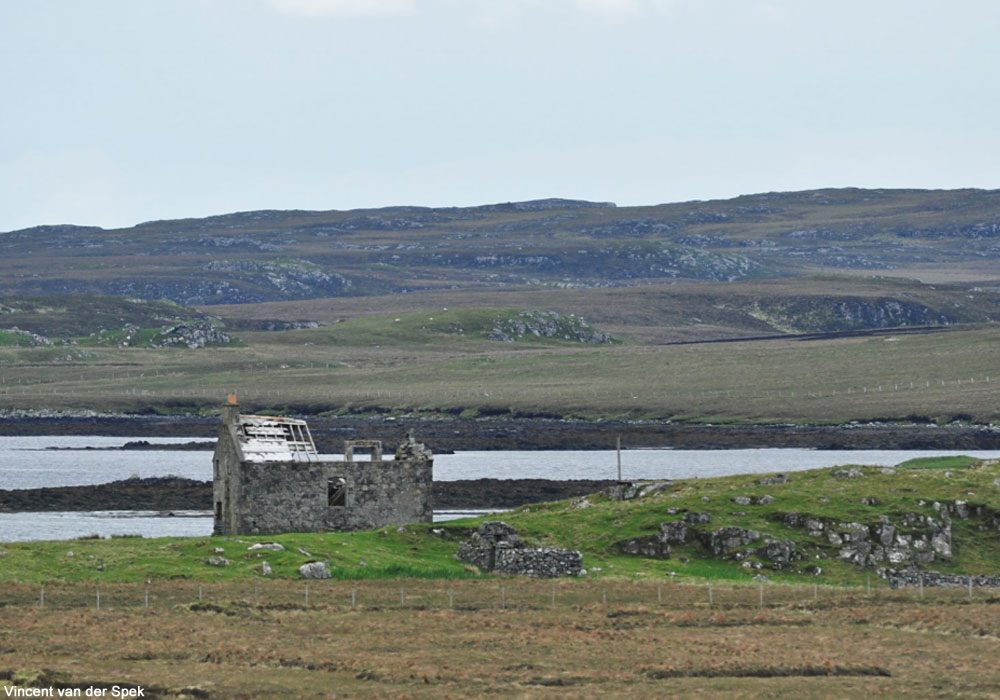Magazine | Voyages
Une rencontre inespérée avec un probable Bécasseau violet nicheur dans les Cairngorms (Écosse) en juin 2021

Bécasseau violet (Calidris maritima) dans les monts Cairngorms en Écosse (Grande-Bretagne) le 4 juin 2021.
Photographie : Matt Scott
Introduction
Le massif des Cairngorms, situé dans le nord de l’Écosse (Grande-Bretagne), est composé de montagnes glaciaires basses et arrondies, qui donnent l’impression de former un plateau. Il culmine à 1 309 mètres d’altitude au niveau du mont Ben Macdhui. C’est la région la plus froide des îles britanniques, la neige pouvant rester jusqu’en septembre. La végétation sur ces hauteurs est en partie recouverte par une lande basse rappelant la toundra arctique, comprenant plusieurs plantes, mousses et lichens du type boréal, comme le Saule laineux.
Cet habitat accueille plusieurs oiseaux nicheurs nordiques rares ou absents ailleurs en Grande-Bretagne, comme le Plectrophane (ou Bruant) des neiges, le Lagopède alpin et le Pluvier guignard. Un autre limicole s’y reproduit de façon très rare : le Bécasseau violet. C’est une espèce typique du Haut-Arctique, et que l’on peut observer en hiver le long des côtes rocheuses d’Europe de l’Ouest. Le premier cas de nidification y a été découvert en 1978, et un à deux couples s’y reproduiraient chaque année.
Le 4 juin 2021, alors que Matt Scott (site web : Matt Scott Photography) faisait une randonnée dans le massif avec ses deux oncles Adrian and Ricky pour observer les « spécialités » ornithologiques locales, ils ont repéré par hasard un Bécasseau violet probablement nicheur dans une zone parsemée de blocs rocheux. Après l’avoir photographié, ils sont rapidement partis pour ne pas le déranger, et le site de nidification est resté secret.
Après une présentation générale de l’avifaune des Cairngorms et du statut du Bécasseau violet en Écosse durant la période de nidification, nous publions ici le récit de cette rencontre inoubliable.
Abstract
The Cairngorms massif, located in the north of Scotland (Great Britain), is made up of low and rounded glacial mountains, which give the impression of forming a plateau. It rises to 1,309 meters above sea level at Mount Ben Macdhui. It is the coldest region of the British Isles, with snow remaining until September. The vegetation on these heights is partly covered by a low heath reminiscent of the arctic tundra, comprising several plants, mosses and lichens of the boreal type, such as the Woolly Willow. This habitat supports several northern breeding birds that are absent or rare elsewhere in Britain, such as the Snow Bunting, the Rock Ptarmigan and the Eurasian Dotterel. Another shorebird is a very scarce breeder there: the Purple Sandpiper, a bird species typical of the High Arctic, which can be found in winter along the rocky coasts of Western Europe. The first case of breeding was discovered there in 1978, and one or two pairs are thought to breed there each year.
On the 4th of June 2021, while Matt Scott (Matt Scott Photography website) was hiking in the massif with his two uncles Adrian and Ricky to watch the birding « specialties », they found by chance a probably breeding Purple Sandpiper in an area dotted with boulders. After photographing it, they quickly left so as not to disturb him, and the site remained a secret.
After a general presentation of the avifauna of the Cairngorms and the status of the breeding Purple Sandpiper in Scotland, we publish here the story of this unforgettable encounter.
Poursuivez la lecture de cet article, en vous abonnant dès maintenant !
Découvrez les Archives d’Ornithomedia.com
Pour seulement 10,00 €TTC/an (ou 6,00 € les 6 mois)
Profitez de plusieurs centaines d’articles en accès illimité et sans aucun engagement.
Compléments
Contact
Matt Scott – Site web : mattscottphotography.zenfolio.com – Page Twitter : twitter.com/mattscottphotos
À lire sur le web
- Le sites web du Cairngorms National Park : cairngormsnationalpark.co.uk
- Un autre site web sur le Cairngorms National Park : cairngorms.co.uk
- Le site web du National Trust for Scotland : www.nts.org.uk
- Le site web de l’Office national de tourisme d’Écosse : www.visitscotland.com/fr-fr/
- Le site web de la RSPB Scotland : www.rspb.org.uk/whatwedo/scotland/
- Le site web du Scotland’s Bird Club : www.the-soc.org.uk
- Le site web de Wild Scotland : www.wild-scotland.org.uk
Ouvrages recommandés
- Le Guide Ornitho de L. Svensson et al
- Northern Scotland, Orkney and Shetland (Carte) de Ordnance Survey
- Where to Watch Birds in Scotland de Mike Madders
Sources
- R. D. Summers et R. W. Summers (2005). Population size, breeding biology and origins of Scottish Purple Sandpipers. British Birds. Volume : 98. Numéro : 11. Pages : 579-588. www.researchgate.net
- Roy Dennis (1983). Purple Sandpipers breeding in Scotland. British Birds. Volume : 76. Pages : 563-566. Décembre. britishbirds.co.uk
- RSPB. Purple Sandpiper. www.rspb.org.uk











Aucun commentaire sur ce sujet
Participer à la discussion !